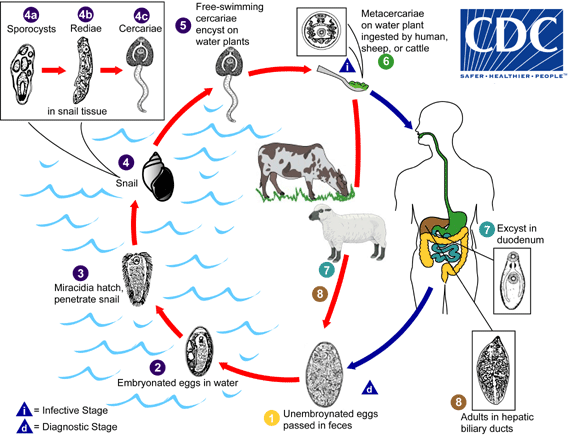
Fasciolosis
.docxFasciolosis
Fasciolosis is a parasitic worm, trematode, infection caused by Fasciola hepatica as well as by Fasciola gigantica.
It affects humans, but its main host is ruminants such as cattle and sheep.
Fasciola parasites live as adult flukes in the bile duct and immature eggs go out through feces and grow in fresh water.
The immature eggs hatch after several weeks in freshwater and develop into a parasite called the miracidium, which then infects a snail host.
It takes about 5-7 weeks for the parasite to develop in the snail and develops into sporocysts, rediae and finally cercariae.
Then the cercariae are released back to the water and encyst as infective larvae, metacercariae, in soil, on vegetation or other places as the water flows. The metacercariae have a hard outer cyst wall as compared to cercariae.
Humans become infected when they ingest infected freshwater plants, especially watercress. Upon entering our system, the metacercariae excyst again in the duodenum and travel through the intestinal wall into the liver.
It eats the liver and usually stays in liver for weeks. Then it moves to the biliary ducts and develop into adult flukes. It takes metacercariae 3-4 months to transform into adult flukes.
When these adult flukes lay eggs and pass them out in feces, the whole new Fasciola hepatica life cycle begins.


